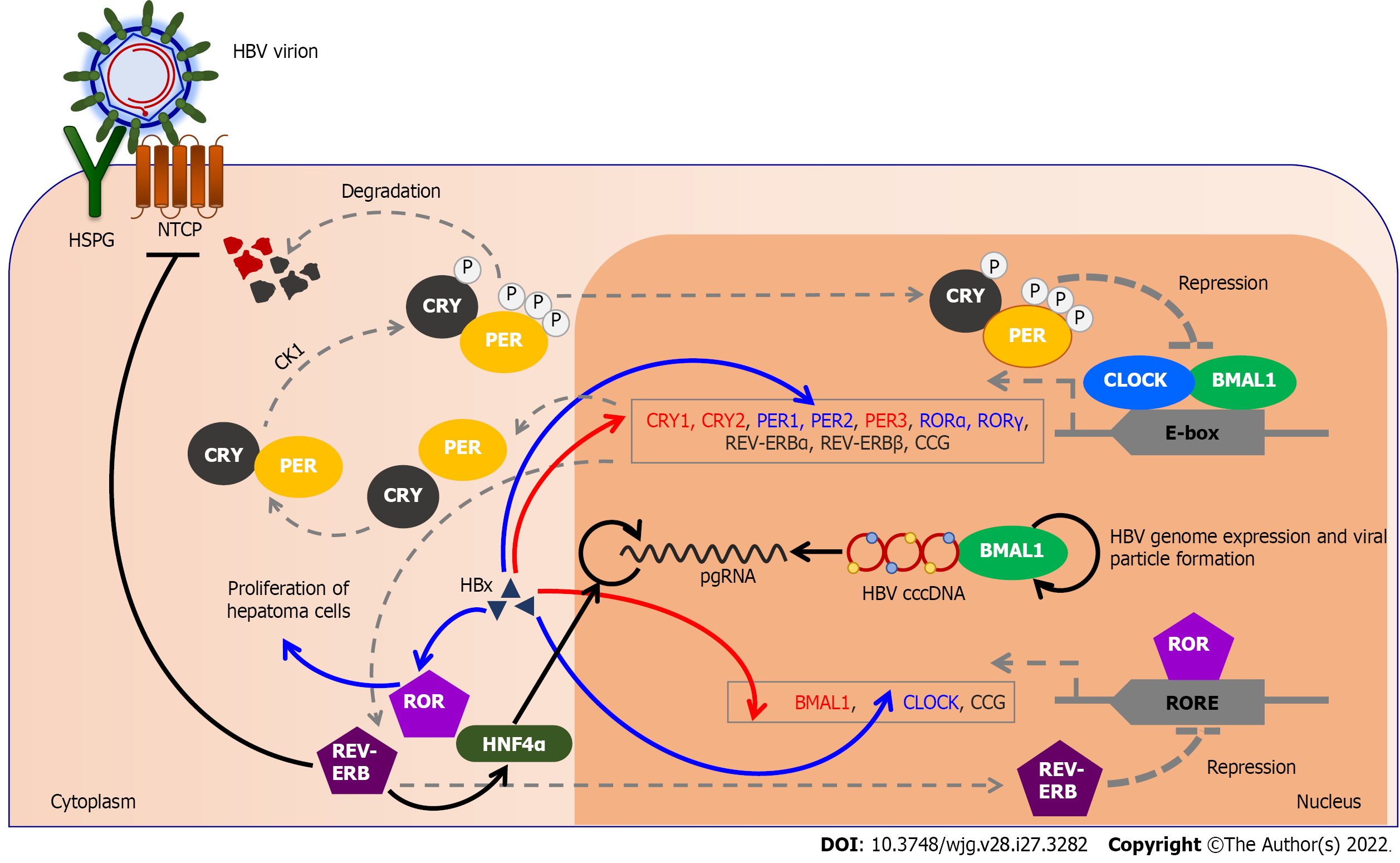Copyright
©The Author(s) 2022.
World J Gastroenterol. Jul 21, 2022; 28(27): 3282-3296
Published online Jul 21, 2022. doi: 10.3748/wjg.v28.i27.3282
Published online Jul 21, 2022. doi: 10.3748/wjg.v28.i27.3282
Figure 3 Relationship between circadian rhythm genes and hepatitis B virus replication.
Gray dashed lines indicate normal circadian rhythm in hepatocytes. Black arrows show the association between core clock proteins and hepatitis B virus (HBV) entry into hepatocytes and its replication. Increased levels of REV-ERB protein prevent the entry of HBV into hepatocytes by impaired action on the sodium taurocholate co-transporting polypeptide (NTCP) receptor. Brain and muscle ARNTL-like protein 1 (BMAL1) protein binds HBV DNA and thus controls viral genome expression and the formation of new viral particles. In infected hepatocytes, REV-ERB through HNF4α mediator increases pregenomic RNA (pgRNA) transcription, while HNF4α inhibits BMAL1 expression, promoting HBV replication. Red arrows indicate circadian rhythm genes inhibited by hepatitis B protein X (HBx) protein (BMAL1, CRY1, CRY2, and PER3). Conversely, HBx increases CLOCK, PER1, PER2, and RORγ gene expression (indicated by blue arrows). Increased expression of RORγ leads to the proliferation of hepatoma cells. BMAL1: Brain and muscle ARNTL-like protein 1; cccDNA: Covalently closed circular DNA; CCG: Clock-controlled genes; CLOCK: Circadian locomotor output cycles kaput; CK1: Casein kinase 1; CRY: Cryptochrome; HBx: Hepatitis B protein X; HNF4α: Hepatocyte nuclear factor 4 alpha; HSP: Heparan sulfate proteoglycan; NTCP: Sodium taurocholate co-transporting polypeptide receptor; PER: Period; pgRNA: Pregenomic RNA; ROR: Retinoic acid receptor-related orphan receptor; RORE: ROR element.
- Citation: Skrlec I, Talapko J. Hepatitis B and circadian rhythm of the liver. World J Gastroenterol 2022; 28(27): 3282-3296
- URL: https://www.wjgnet.com/1007-9327/full/v28/i27/3282.htm
- DOI: https://dx.doi.org/10.3748/wjg.v28.i27.3282









